Photography courtesy of Lowell Washburn, all rights reserved.
The guy standing ahead of me at the grocery checkout had just placed four jars of grape jelly on the counter. Grape jelly. That was it; nothing else.
“Orioles,” he said with a grin. “I’ve never seen so many. They’re almost eating us out of house and home.”
“These jars will be empty in a week,” he added. “A few years ago we didn’t see any [orioles]; now they’re everywhere. It’s great!”
I agree. Having orioles visit backyard feeders is fun. Of all the songbirds that return to Iowa each spring, perhaps no species adds richer color or brings a cheerier song than the Baltimore oriole. The oriole’s elegant black and orange plumage is stunning; it’s warbling song pure crystal. Little wonder the species remains one of our most treasured backyard visitors.
By early May, most orioles will have returned to Iowa from their winter resorts in Central and South America. Once they arrive on the breeding grounds, the birds lose no time in getting down to the serious task of nesting. The female does most, if not all, of the actual nest construction, utilizing string-like strands of fiber to weave one of the most intricately amazing structures to be found anywhere in the bird world. Although overall nest size and color may vary, one aspect remains constant. Once completed, the pendant shaped hanging basket has literally become an avian work of art.
This year’s nesting season is in full swing and oriole pairs are currently engaged in feeding their ravenous broods of nestlings. Spiders provide a ready source of protein for rapidly growing young; and foraging adults gather the arachnids with an efficiency that would make the Orkin Man turn green with envy.
Observing the daily lives of backyard orioles has never been so easy. But many Iowans can still remember when Baltimore orioles, along with many other species, existed only as pictures in books. For North American songbirds, the decades of the 1950s and 1960s were bad news. The much touted era of “Better Living Through Chemistry” had arrived and times were changing. Widespread indiscriminate use of a miracle pesticide known as DDT was not only wreaking havoc on its intended victims but was having an insidious effect on more advanced life forms as well. Although the 1962 release of Rachel Carson’s controversial book Silent Spring had catapulted the issue onto the national stage, it would take another decade of bitter debate before DDT restrictions were finally imposed [in the U.S.] in 1972. By then, DDT residues were accumulating in such unlikely places as the fat tissues of Antarctic dwelling penguins. For other species the end appeared near, and scientists were predicting the eminent extinction of bald eagles, ospreys, and peregrine falcons.
Fortunately, those predictions never came true. Tables turned; not just for bald eagles, ospreys and peregrines, but for a host of other species as well. In the years following the 1972 ban on DDT, American birdlife has enjoyed a slow but resounding recovery. Today, Iowa’s parks, woodlots, and residential backyards are a whole lot “nosier” than they were 40 years ago.
At least a part of that noise comes from the distinctive melody of the Baltimore oriole. Back in the mid-sixties, the sighting of an oriole in my hometown of Clear Lake was a noteworthy event. The species was so rare, in fact, that in some years we didn’t see any. Today there are few, if any, Clear Lake neighborhoods where the crystal whistle of singing orioles cannot be heard. The surge is by no means restricted to my hometown, but is duplicated across the state. These days, I often see and hear more orioles in a single morning than I did during all four years of high school. Other popular songbirds – grosbeaks, buntings, wood thrushes, and warblers — have enjoyed similar increases in abundance.
Thanks to a cleaner environment, Iowa’s spring landscape is far from silent.

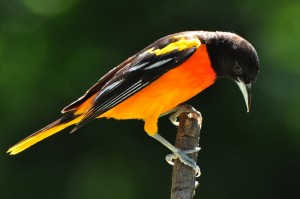
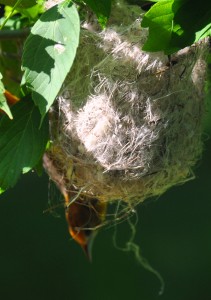


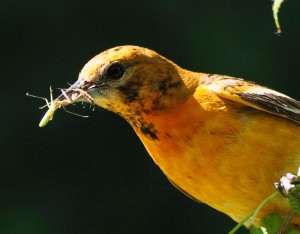
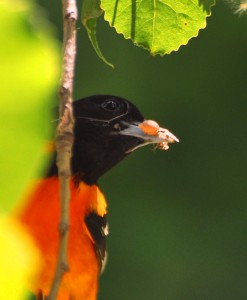
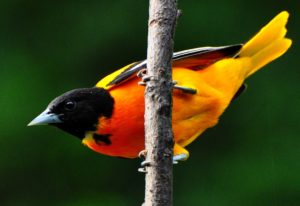
 Susan Judkins Josten
Susan Judkins Josten Rudi Roeslein
Rudi Roeslein Elyssa McFarland
Elyssa McFarland Mark Langgin
Mark Langgin Adam Janke
Adam Janke Joe Henry
Joe Henry Sue Wilkinson
Sue Wilkinson Tom Cope
Tom Cope Kristin Ashenbrenner
Kristin Ashenbrenner Joe Wilkinson
Joe Wilkinson Dr. Tammy Mildenstein
Dr. Tammy Mildenstein Sean McMahon
Sean McMahon